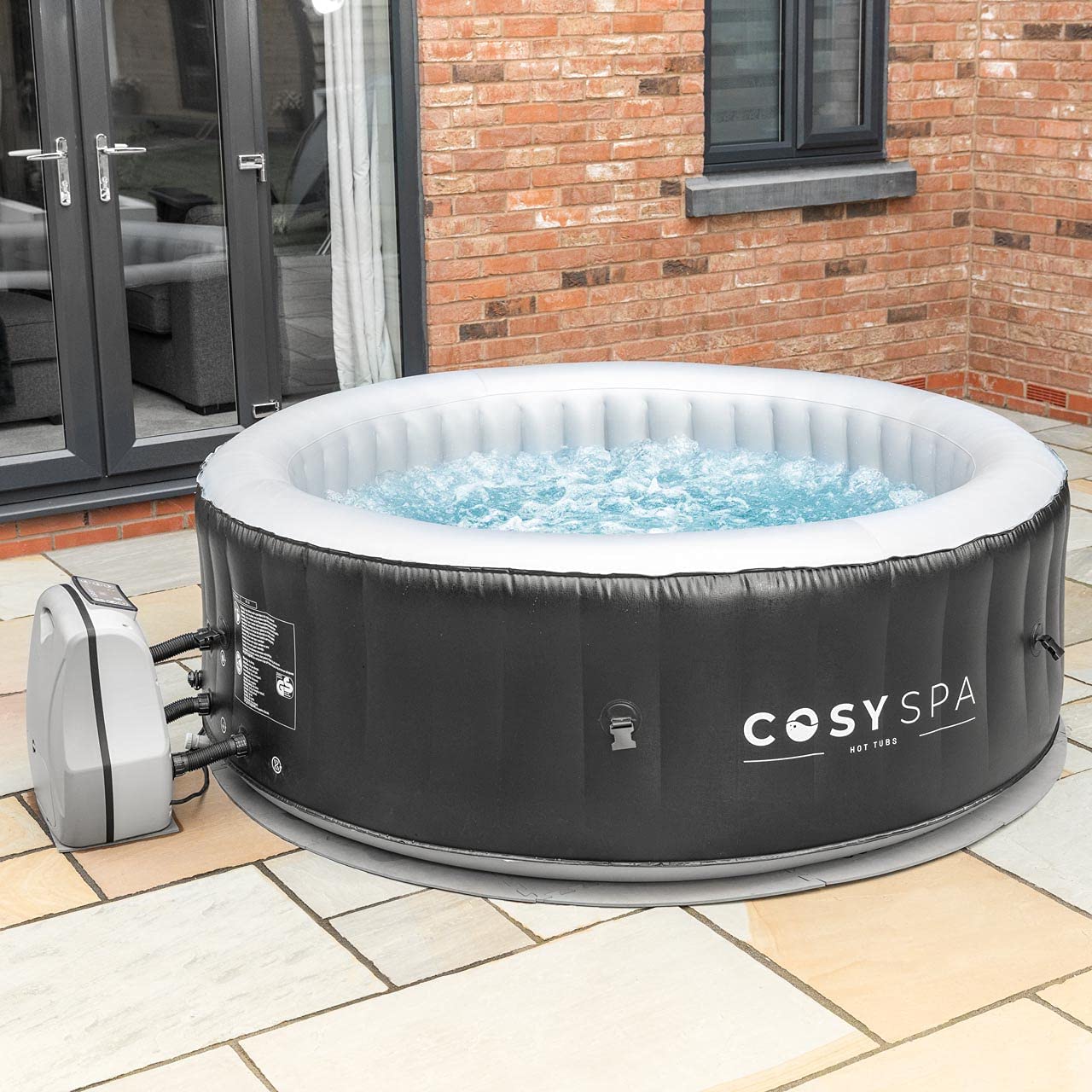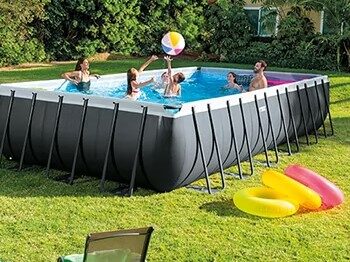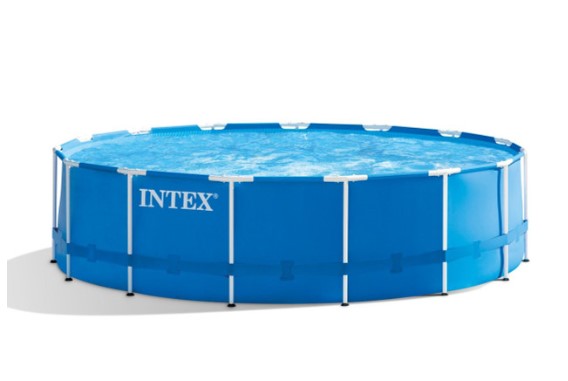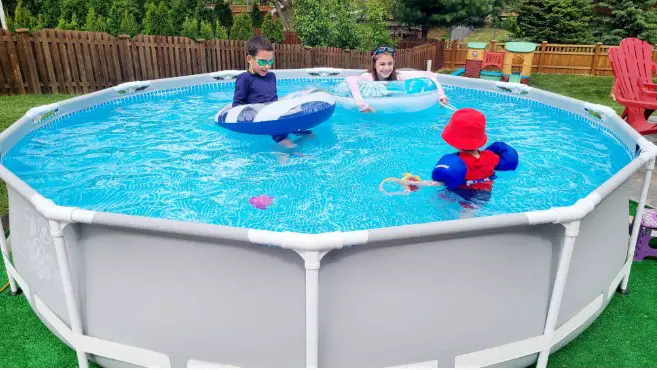Table of Contents
If you own an inflatable hot tub, chemicals are a necessary part of keeping the water clean and safe for use.
While there are many different types of chemicals available, it can be confusing to know which one you need and when to use it.
This guide will help you select the right chemical for your inflatable hot tub and ensure that your water is always ready for a relaxing soak.
Should I Use Chlorine In My Inflatable Hot Tub
Chlorine is a naturally occurring chemical element to be found on Earth.
It is one of the most useful and widely used chemicals as chlorine plays a critical role in several industries, including water treatment, paper production, pharmaceuticals, and food sanitation.
In addition, chlorine also has use cases in smaller applications from swimming pool disinfection to helping produce bright colors for clothes.
Considering chlorine and other sanitizers are essential to keep your inflatable hot tub clean and hygienic, the answer is yes.
However, chlorine levels should be monitored regularly to make sure that they’re not too high or too low.
The best way to use chlorine in your inflatable hot tub is through daily testing and chlorine shock treatments depending on your chlorine reading.
The chlorine levels must be kept between 1-3 ppm for optimal results, meaning you might have to adjust the chlorine level throughout the week.
If chlorine levels dip significantly overnight, it’s important to shock treat your hot tub with chlorine as quickly as possible.
Investing in a test strip kit from your local pool store can help determine how much bleach or chlorine you need to add when treating your hot tub too.
Bromine Instead of Chlorine?
Bromine has a fascinating history as one of only two elements that liquefy at room temperature.
It’s an interesting-looking substance, with a red-brown color. What bromine is most known for, however, is its applications. It’s used to make dyes, medicines, flame retardants, and antiknock compounds in gasoline engines!
It’s even found in water purification processes making our pools and hot tubs safe and free of bacteria. Bromine serves many useful purposes and is often taken for granted yet essential in many respects.
If you’re looking for ways to keep your inflatable hot tub crystal clear and pristine, bromine could be the answer. Bromine has been widely used in the recreational water industry for decades now, and it’s no wonder why – its antibacterial properties make it a great choice for keeping sanitary waters.
Because bromine is relatively effective at lower temperatures, it works especially well when trying to maintain an inflatable hot tub. The key to using bromine effectively is knowing just how much bromine your body of water needs – too little won’t keep things clean, while too much bromine can be as damaging as none at all.
The amount of bromine required varies depending on your specific situation – discuss this with a professional if you’re uncertain of what to do next!
pH levels
pH stands for ‘potential Hydrogen’ and pH levels indicate the amount of acidity or alkalinity in any given solution. pH levels are important when it comes to hot tubs – pH is the measure of how acidic something is, with 7 being neutral.
pH levels in your hot tub should stay between 7.2 and 7.6 pH to manage algae growth, keep the water clear, and prevention of skin irritation. Keeping pH at the proper levels also ensures that your chemicals such as chlorine or bromine work more effectively.
It’s important to regularly check pH levels since pH can drift quickly due to sources of moisture, heat, and bathers themselves that can all cause pH levels to change. Hot tub owners should test pH levels once a week using a pool or hot tub pH tester or using acquiring a test strip kit.
If pH levels are too low, adjust by adding a pH increaser; and if the pH levels are too high, use a pH reducer to balance it out again. The key to keeping your hot tub at optimal pH level is simply staying on top of testing so you can make any needed adjustments quickly!
Alkalinity
Alkalinity is a measure of the alkali elements or alkaline materials that are present in water. For example, the alkalinity helps to regulate pH levels – alkaline substances like calcium and magnesium can act as buffers to prevent wild swings in pH.
Furthermore, high alkalinity levels can make it difficult for aquatic plants to flourish due to their low alkali tolerance.
Alkalinity may sound like a complicated concept, but understanding the basics is not too hard – after all, alkaline elements naturally exist all around us, and maintaining a balance of these elements is key when dealing with freshwater and saltwater systems.
Calcium Hardness
Calcium hardness is an important factor to consider when it comes to balancing pool water chemistry.
It affects not just the quality of the water but can prevent costly damage to pool equipment and surfaces. Not enough calcium hardness in pool water can cause corrosion, staining, and scaling whereas too much calcium may cause cloudy water.
Thus, it’s best to ensure that the calcium hardness level of your pool falls into the ideal range determined by your local health regulatory agency.
Thankfully, calcium hardness can be easily tested and adjusted with a calcium hardness test kit or calcium boost products to make sure you have crystal-clear swimming pleasure!
Phosphates
Phosphates play an important role by providing the essential phosphorous that plants and animals need to survive.
The presence of phosphates in our environment is essential for both human health and maintaining the existing ecosystems.
They are naturally occurring, but phosphates can also be manufactured synthetically, causing phosphorous levels to become saturated in water systems, leading to algal bloom resulting in a lack of oxygen in the water – a deadly thing for aquatic life!
We must recognize phosphates as an essential element needed in our environment and take care that they don’t get used up too quickly or become imbalanced due to overuse.
As a species, we should strive to maintain a healthy balance of phosphates in our waters by not using synthetic phosphates as well as actively removing them from bodies of water when there is over-saturation.
Final Thoughts
Now that you know the basics of hot tub chemistry, it’s time to get out there and purchase your tub! Maintaining your tub isn’t that difficult once you follow strict regimented guidelines.
Check your levels often and top off when necessary.
Your skin will thank you for it!




